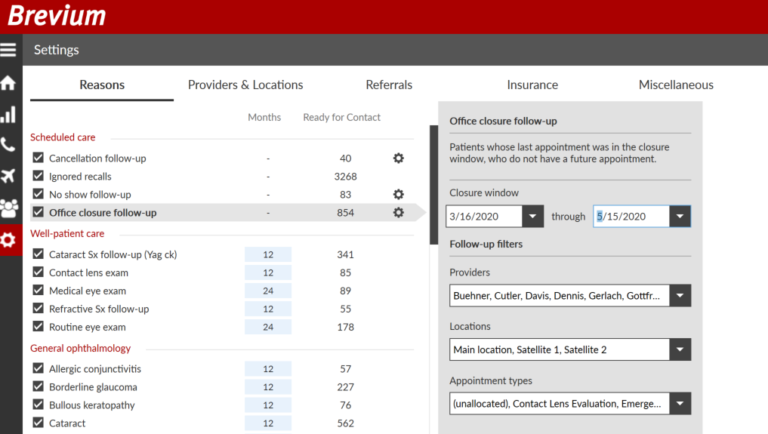The Brevium Blog

Your Patient Communication Practices Are Due for a Checkup
Relying completely on your current patient communication system could leave you missing a large population of patients whom you should be engaging. You have likely committed to a reliable patient recall system and have sunk a lot of money into implementing it. Like most administrators and other practice and business leaders, you turned this system on and, after evaluating results, trust that it is doing its job. However, this might trap you in a sunk-cost bias. Forbes defines this as “It’s our tendency to continue investing in a losing proposition because of what it’s already cost us.” After investing time, money and reputation in a system, decision-makers tend to stick with that system even when conditions change or new situations arise.
You Might Be Missing a Significant Patient Population
When you implemented and tested your recall and practice management systems, you were probably looking primarily at how effective they were at recalling patients and reminding them of their appointments. However, recapturing patients who have not returned to your practice for needed care for 12 months or more are in a different category from current patients, and reactivating them requires different strategies and methods. Your practice likely has 1,000 to 2,000 of these patients for each of your providers. In a study that Brevium conducted to understand how to reactivate these patients, we found, for example, that an ophthalmology practice with seven providers could capture $600,000 in collections over 12 months if they recaptured a conservative number of these patients. That’s a huge number! One that you can’t afford to miss out on. So, what can you do? Here are some ideas.
Step Outside Your Current Communication System
Our study showed that to recapture out-of-compliance patients, you need to shed your sunk-cost bias and look outside your automated emails and text reminders. Consider a new strategy. A significant number of inactive patients will respond when you employ multiple communication methods. You should start with texts and emails. Then, for those who do not respond, add autocalls, mailers and live phone calls. Sending multiple communications is also important. We found that while some patients will respond to one communication, more will respond to each additional communication, with a significant number requiring as many as six or more. Think about it. You might see a text message or email come through, but then forget about it. By sending reminders in different ways, you’ll be giving your patients more opportunities to remember or reschedule, if needed. You’re less likely to lose them if they don’t totally forget about their appointments. No one likes calling an office to admit they stood them up, even if it was just an accident. That’s why finding a solution that can truly help you with retaining your patients is so crucial.
Brevium Can Help
Brevium is the pioneer in patient reactivation. Brevium’s software mines clients’ patient databases using customized algorithms to find lost patients. Brevium then uses communications strategies that are based on original research to help ensure that patients return for the care they need, and practices derive the greatest financial benefit from the patient appointment lifecycle™. Hundreds of practices have found Brevium to be a trusted partner, with personalized training and unlimited support.














